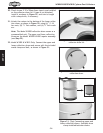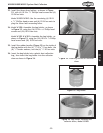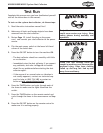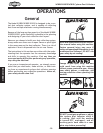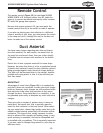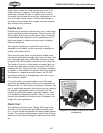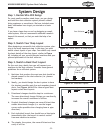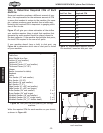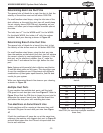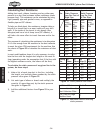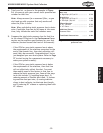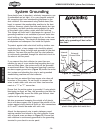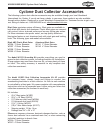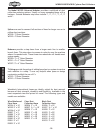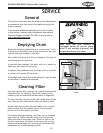
-32-
W1808/W1809/W1810 Cyclone Dust Collectors
OPERATIONS
Step 4. Determine Required CFM of Each
Machine
Since each machine produces a different amount of saw-
dust, the requirements for the minimum amount of CFM
to move that sawdust is unique to the machine (for exam
-
ple, a planer produces more sawdust than a table saw).
Knowing this required CFM is important to gauging which
size of duct to use.
Figure 47 will give you a close estimation of the airflow
your machine requires. Keep in mind that machines that
generate the most sawdust should be placed closest to
the dust collector. If the machine has multiple dust ports,
the total CFM required is the sum of all ports.
If your machine doesn't have a built in dust port, use
Figure 46 to determine which size of dust port to install
on your
machine.
Machine
Dust Port Size
Approximate
Required CFM
2" 98
2.5" 150
3" 220
4" 395
5" 614
6" 884
7" 1203
8" 1570
9" 1990
10" 2456
Figure 47. Approximate required airflow
for machines, based on dust port size.
Figure 48. CFM requirements labeled for
each machine.
Write the required CFM for each machine on your sketch,
as shown in
Figure 48.
Machine
Average Dust Port Size
Table Saw 4"
Miter/Radial-Arm Saw 2"
Jointer (6" and smaller) 4"
Jointer (8"-12") 5"
Thickness Planer (13" and smaller) 4"
Thickness Planer (14"-20") 6"
Shaper 4"
Router (mounted to table) 2"
Bandsaw 4"
Lathe 4"
Disc Sander (12" and smaller) 2"
Disc Sander (13-18") 4"
Belt Sander (6" and smaller) 2"
Belt Sander (7"-9") 3"
Edge Sander (6" x 80" and smaller) 4"
Edge Sander (6" x 80" and larger) 5"
Drum Sander (24" and smaller) 2 x 4"
Drum Sander (24" and larger) 4 x 4"
Widebelt Sander (18" and smaller) 5"
Widebelt Sander (
24"–37" single head) 2 x 6"
Widebelt Sander (24"_51" double head) 5 x 4"
Figure 46. Dust port size and quantity per average
machine.



